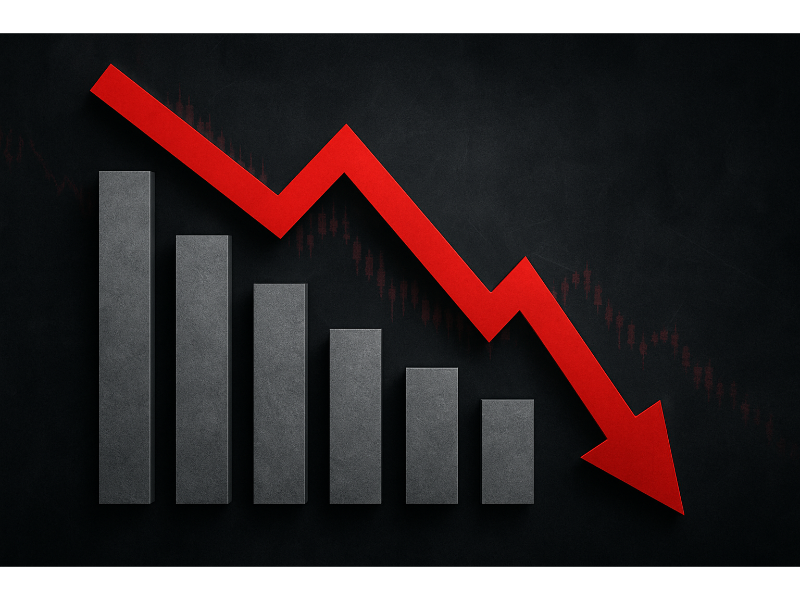When the economy is not running at full speed, economists pay close attention. One sign they look for is something called a recessionary gap. It is not just a technical term. It points to a real slowdown in production, jobs, and spending.
If the economy could be producing more but is falling short, that is a recessionary gap. This tells us resources like labor and capital are sitting unused. People want jobs. Businesses could grow. But something is holding everything back.
Knowing what a recessionary gap means helps explain why the economy sometimes feels sluggish and why governments take the actions they do to turn things around.
What Is a Recessionary Gap?
A recessionary gap happens when actual output in the economy is lower than what it could be if everything were running smoothly.
Actual output is measured by GDP, which is short for Gross Domestic Product. That is the total value of goods and services a country produces.
Potential GDP is what the economy could produce if every worker who wants a job has one and every machine, factory, and tool is being used efficiently.
When there is a gap between these two, it signals a slowdown. The economy is not broken, but it is underperforming.
How to Understand the Gap?
Think of potential GDP as the economy at full strength. This does not mean zero unemployment, but it does mean people who want work can usually find it.
Actual GDP reflects what is happening right now. It moves with demand, confidence, investment, and global events.
The recessionary gap is the space between these two. It shows that something is holding the economy back from reaching its full potential.
What Causes a Recessionary Gap?
There is no single cause. But some common triggers show up in most cases.
A drop in demand
If people are not spending, businesses stop producing. This can happen when jobs feel uncertain or wages are not keeping up. It can also happen when companies expect slower growth and hold back on hiring or investing.
High interest rates
When borrowing becomes expensive, people delay buying homes or cars. Businesses slow their spending as well. This weakens demand across the board.
External shocks
Events like a war or a pandemic disrupt the flow of goods and services. These shocks often damage both supply and demand at the same time.
Falling prices
When people expect prices to go down, they wait. That pause in spending leads businesses to cut back. This delay in activity makes the recessionary gap wider.
Real-World Examples
The 2008 financial crisis created a massive recessionary gap. Once the housing market collapsed, banks stopped lending. People lost jobs and cut spending. Businesses delayed their investment. The economy could produce more, but it stalled.
The COVID-19 pandemic in 2020 brought a different kind of shock. This time, entire industries were forced to shut down overnight. Even healthy businesses could not operate. Demand collapsed and global GDP dropped sharply.
In both cases, governments and central banks stepped in. They offered financial support, lowered interest rates, and tried to restart growth.
How Do Economies Respond
When a recessionary gap opens, the goal is to close it. That usually means boosting demand and bringing people back to work.
Governments may increase spending or cut taxes
This puts more money in people’s hands and encourages spending. Public investment in things like transport, energy, or infrastructure often plays a big role in recovery.
Central banks may lower interest rates
This makes borrowing cheaper. It encourages people to spend and businesses to invest. Some central banks also inject money into financial systems to keep credit flowing.
How This Differs from an Overheated Economy
A recessionary gap means the economy is operating below capacity. You see higher unemployment and slower inflation.
An overheated economy is the opposite. Output rises above potential. Prices go up fast. Labor markets tighten. Policymakers usually need to slow things down to prevent long-term damage.
Why This Matters
A recessionary gap is more than an economic concept. It is a sign that the system is off balance. It shows when jobs are hard to find, when spending slows, and when confidence drops.
By understanding what causes the gap and how it can be fixed, you get a clearer picture of how economies function during slowdowns. You also see why certain policy decisions are made and what they aim to solve.
Keeping an eye on output gaps gives governments, businesses, and individuals a better way to prepare for shifts in the economy. It is one of the clearest signals that something needs to change.
